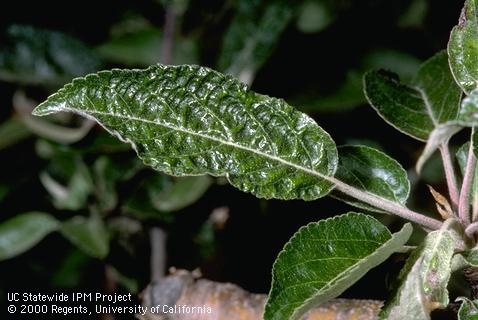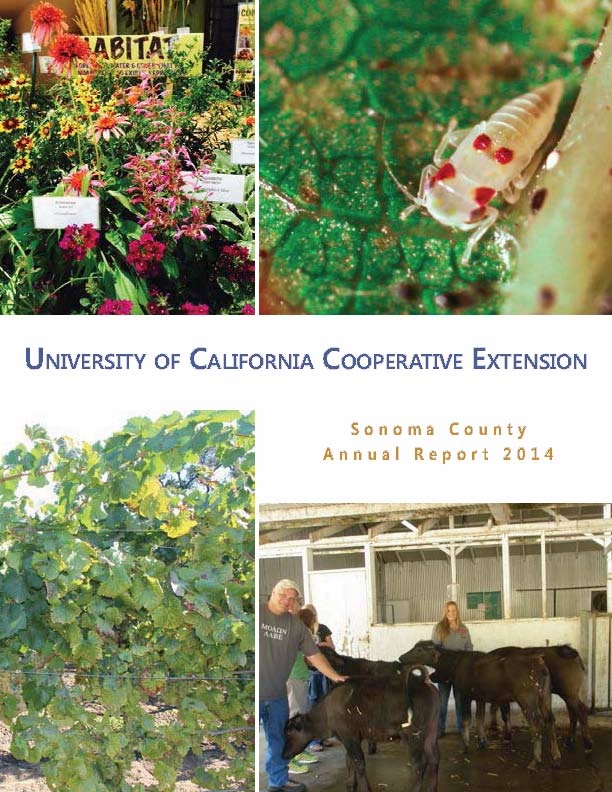- Author: UC Delivers
Reprint of UC Delivers article
The Issue

What Has ANR Done?
Research at UC Berkeley's College of Natural Resources has shown that frost-sensitive plants are damaged only when ice forms in the plant, not by cold temperatures alone. Further, certain common plant bacteria trigger ice formation by a process called ice nucleation. In the absence of these bacteria, plants do not freeze until faced with relatively cold temperatures. By inoculating crops early in their seasonal development, research has shown that ice-nucleation active bacteria can be prevented from growing. In the field, researchers demonstrated that both the altered bacteria and naturally occurring bacteria successfully competed with the ice-nucleation active bacteria on the potato plant. This represented the first field use of genetically engineered microbes in the world. Both reduced the freezing temperature of crops from 2 to 6 degrees F and reduced plant frost damage during typical frosts of about 28 degrees F by an average of 80 percent.
The Payoff
Frost damage reduced by up to 80%
using bacterial spray derived from research
A naturally occurring bacterial strain from a pear tree in Healdsburg was found to improve control of frost damage when sprayed onto crops. This bacterium also controls fire blight, a devastating disease of pear and apple trees. The bacterium has been commercialized as a freeze-dried preparation of live bacteria that can be sprayed onto crops with standard agricultural spray equipment. This product, Blightban A506, can provide considerable control of frost damage and is registered by the U.S. Environmental Protection Agency for use on a wide variety of crop plants, including pear, apple, strawberry, peach and potato. In the western U.S. and other regions, approximately 50 percent of the crop acreage, such as pear and apple, is treated with this antagonistic bacterium for both frost and disease control. The use of this biological control agent provides an environmentally safe and economical means of frost protection, ensuring crop productivity even when cold temperatures strike.
Learn More
Blightban A506 is registered for use on a variety of crops. It is produced by Nufarm Americas. They may not have much in the way of technical materials. "If any of your growers would like to give this a try I would be glad to answer any questions" Steven Lindow. Contact information below.
Peer Reviewed
The Role of Bacterial Ice Nucleation in Frost Injury to Plants, Steven E. Lindow, Deane C. Arny, and Christen D. Upper, US National Library of Medicine, Plant Physiology.
Interactions of Antibiotics with Pseudomonas fluorescens Strain A506 in the Control of Fire Blight and Frost Injury to Pear, Steven E. Lindow, Glenn McGourty, Rachel Elkins. The American Phytopathological Society.
Contact
Steven Lindow, UC Berkeley Department of Plant and Microbial Biology
(510) 642-4174, icelab@berkeley.edu
ice nucleation ann rev
- Author: Karen Giovannini
2014 Annual Report letter from Stephanie Larson, County Director and Livestock & Range Management Advisor:
As we move into the next 100 years of Cooperative Extension, we continue to value the public/ private partnerships that have been the foundation of our organization, raising the bar by supporting the County of Sonoma Initiatives on local agriculture and healthy communities. UCCE advisors are critical partners with local farmers and ranchers, providing scientific-based information on techniques that can be used to increase production and thus increase economic stability, while addressing environmental concerns.

This past year, UCCE conducted research and provided educational programs to help commercial row crop farmers and livestock producers in Sonoma County deal with drought and climate change. Our frost tower research in vineyards evaluated methods for making the most of local water resources through increased irrigation efficiency. Water conservation programs are also focused on the urban gardener, partnering with the Sonoma County Water Agency to educate the public on how to use less water; and with the Agricultural Preservation and Open Space District to develop an evaluation tool for documenting ecosystem services that have been maintained or increased through implementing conservation easements and proper rangeland management.
We partnered with other county departments to increase access to healthy, local, sustainable food. One outcome was the County Land for Food Production (CLFP) project; which allowed UCCE to work on creating an incubator farm on county land. These efforts are aimed at increasing access to land for food production, and the number of farmers and ranchers growing local food, respectively. The goals align with the Sonoma County Healthy and Sustainable Food Action Plan. Our Agricultural Ombudsman played a critical role in assisting individuals who want to create or expand their farming and ranching enterprises, and is currently working with PRMD to address local poultry processing.
Learn about these programs and more in our 2014 Annual Report.
- Author: Karen Giovannini

Maybe you know about the 4-H and Master Gardener programs, but we also have Livestock & Range Management, Viticulture, Integrated Pest Management, Specialty Crop and Marine Science advisors.
In addition, we have the Agropreneurship Beginning Farmers & Ranchers Program, the Sudden Oak Death Program, the Endangered Coho Recovery Program and an Agriculture Ombudsman.
Read all about the great work we are doing in our 2012 Annual Report.



